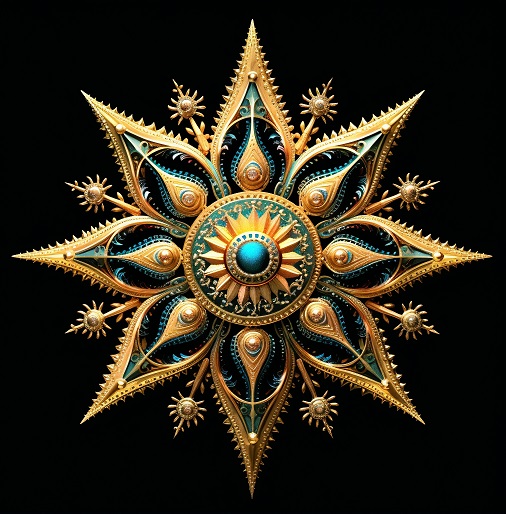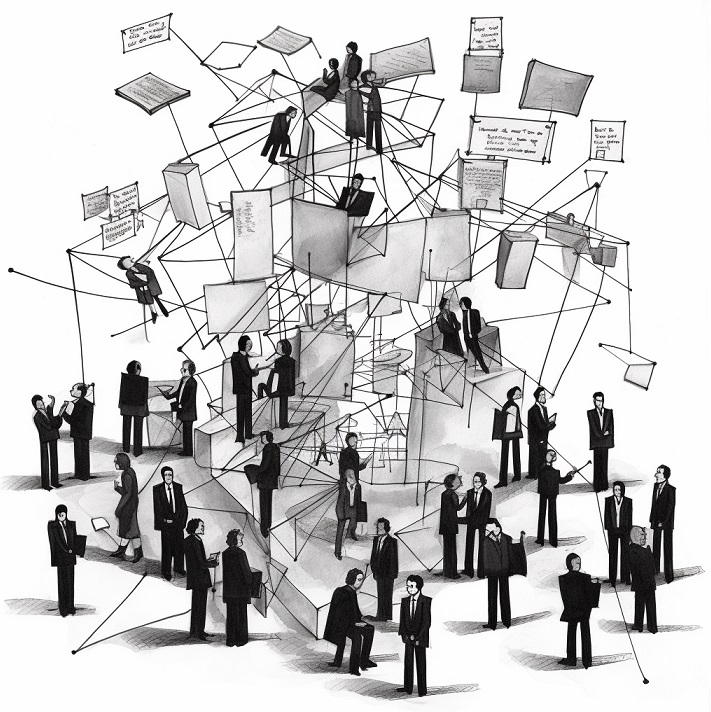
In Part I, I described some observations from my experiences at BIF and Burning Man, and alluded to the notion that I might have uncovered a very simple “secret sauce” they share. Here are the observations:
- Both communities consist of active and engaged participants who could be considered “innovation junkies”. Whereas the BIF crowd focuses on more traditional organizational and social innovation, the Burning Man crowd spans the extremes of experiential innovation (through art, technology, interactions with other people, or even just figuring out how to navigate life in the Black Rock Desert).
- “Random Collisions of Unusual Suspects” (#RCUS) is the norm in both environments. First, the “unusual suspects” seem to be attracted to opportunities to be inspired and get their brains re-wired; second, the participants in both environments seem predisposed to the notion that serendipity is working on their behalf — and they let it happen.
- People at both BIF and Burning Man tend towards non-judgment, seeking to appreciate and learn from their differences (rather than to resist, deny, or challenge those differences).
The common thread is that both environments have something magical designed into them, and this is the secret sauce: the push to drive out fear. Many of the BIF storytellers have been through Campbell’s Hero’s Journey and make themselves vulnerable so that the audience can vicariously (and often emotionally!) experience their transformation; at Burning Man, you’re stripped of your usual identity and thus unburdened from the fear you might carry as a result of having developed that identity over so many years.
When quality guru W. Edwards Deming formulated his 14 Points decades ago – principles for managers to transform business effectiveness – he expressed that the purpose of the points was to enable everyone to work with joy. One of the points (my favorite one, in fact) is to drive out fear so that everyone may work effectively.
If you are to fully embrace innovation, there is no room for fear! You must work towards fully being yourself, to push your own boundaries, and by extension, to push the boundaries of others, and to push the boundaries of traditional and accepted ways of doing things (“business models”). You are encouraged to own your own story, to TELL your own story, and to connect with others to help them identify with their own stories – and chase away the fear of being authentic, of being able to contribute to your greatest potential.
Why do we hold back? Why are we fearful? (I do it too, all the time.)
- I am afraid you won’t accept me. I am afraid you won’t like me.
- I am afraid you will disagree with my choices or decisions, and struggle with me or reject me as a result.
- I’m afraid you won’t think I’m smart enough, good enough, worthy enough.
- I am afraid that if you know who I really am, it might have consequences for my health or well-being (e.g. I could lose job, my reputation, my standing within the organization or community).
- I’m afraid that what I’m trying to do – or be – just won’t work.
| FEAR **IS** THE BOX. |
To think “out of the box,” you must be living out of the box, and it’s an ongoing (and lifelong) process to do that.
I have not yet achieved healthy fearlessness as my steady state – I’m still awaiting bursts of my own personal transformation. According to Ignite.me:
Joseph Campbell talked about the ‘Hero’s Journey’ whereby the hero is beckoned to enter an unfamiliar world. When the hero enters this world, they are met with challenges, hurdles, and eventually a seemingly insurmountable confrontation which is achieved by using skills they picked up along the journey. By overcoming this obstacle, the hero attains new self-knowledge which they can bring back to their people in the ‘ordinary land’ as their gift to the world.
Common themes of ancient mystery traditions are secrecy, death of the ego, participating with archetypal reality, and a rebirth of a new self. The Eleusinian Mysteries took place over almost 2000 years and were shrouded in mystery from the uninitiated. Shamanic initiation often comes with the shaman being psychologically and experientially deconstructed and put back together. Some tribal societies had rites of passage where children are ripped away from the bosom of the mother and left in the bush to learn how to become a warrior. Rites of passage are transformational experiences where the old you is transformed into a new YOU. That’s where we want to take you, and we create the container for that transformation.
What that means is that you may come as a journalist, or a chef, or a bike messenger, or a computer programmer but for the duration of our journey, you may choose to leave that behind to lose yourself in the present in workshops, dance, yoga, and celebration. Transformation is disruptive and disorienting and actually occurs when past beliefs are shattered, habits are broken, and futures are rewritten.
By temporarily suspending fear, you create the space for transformation – the space for new experiences to redefine what you know and feel about yourself, and your interactions with other people and the world around you.
But this concept has been around for thousands of years… more on that tomorrow.







Leave a Reply